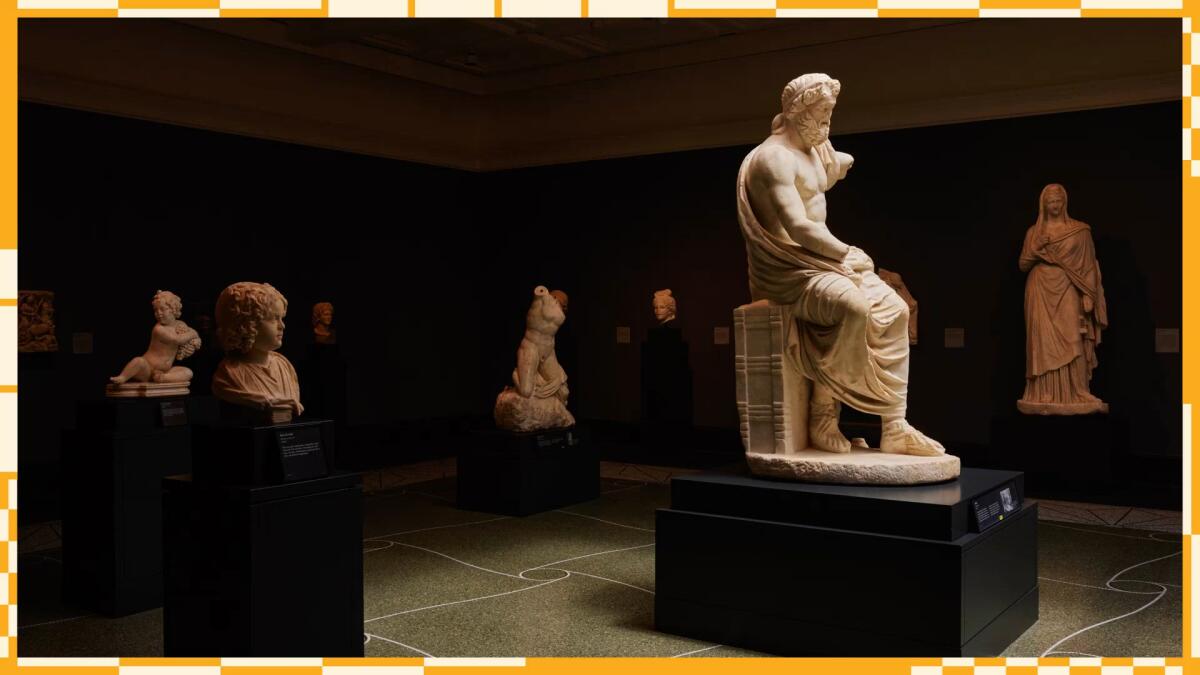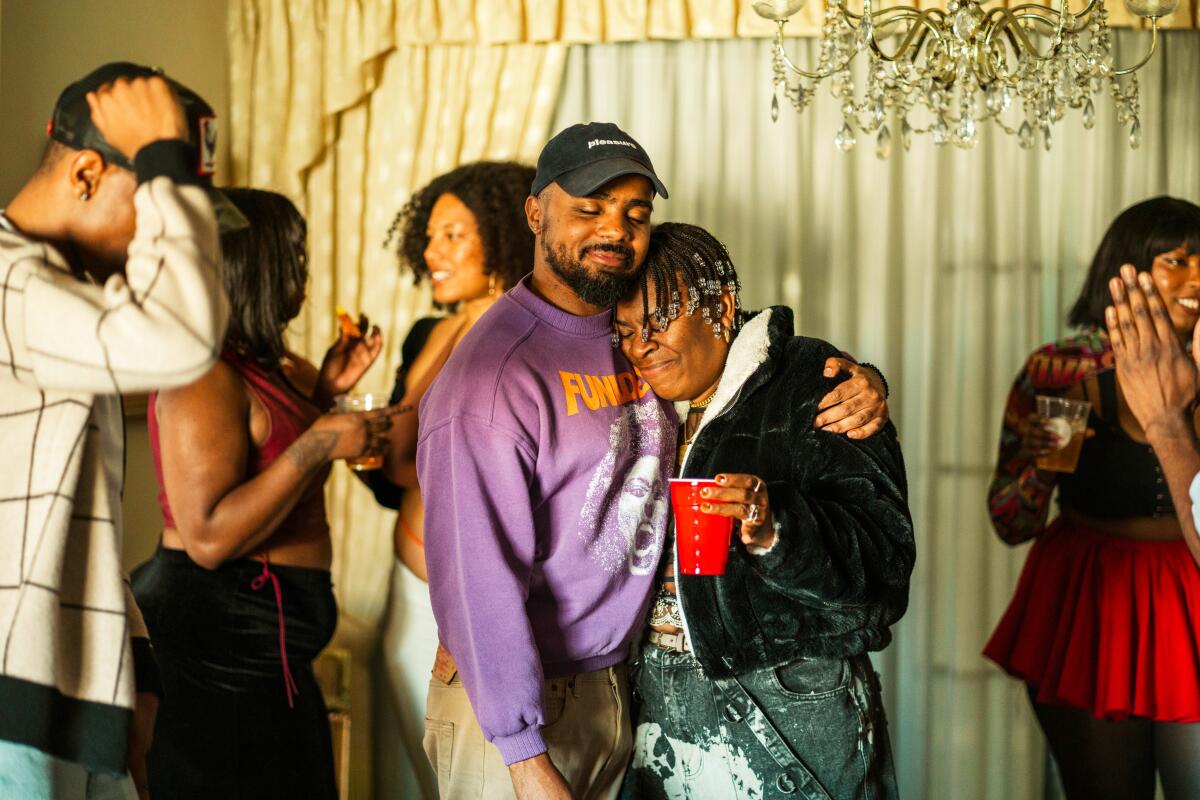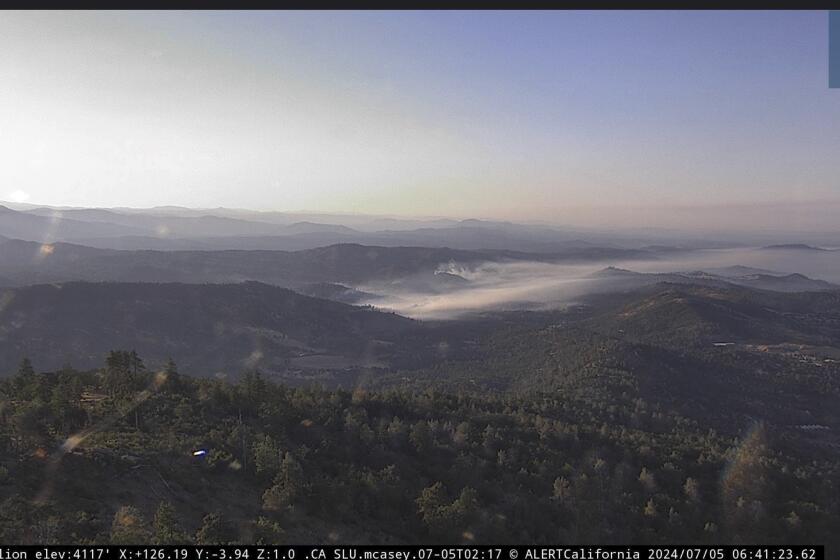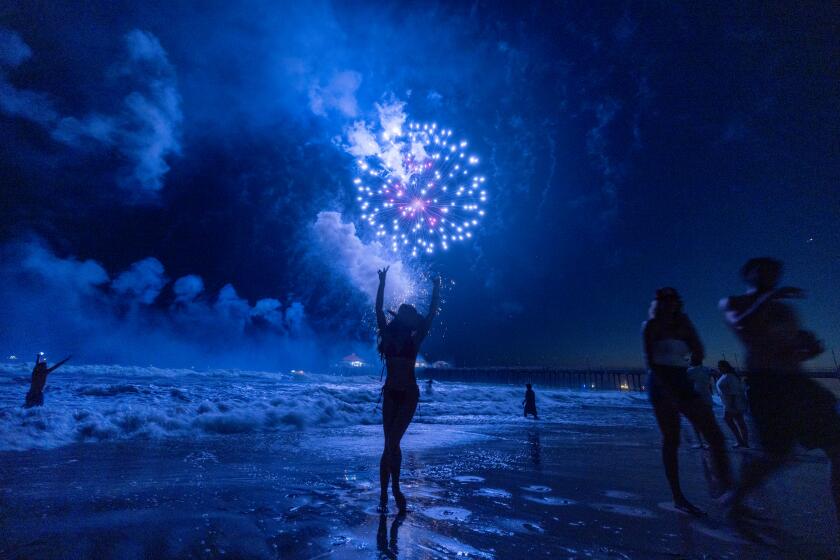This fraternal order made California’s flag official. How will they face their racist past?

Good morning. It’s Friday, July 5. Here’s what you need to know to start your day.
- A historic fraternal order reckons with its racist past.
- Sweltering heat, wildfire risk loom for July Fourth weekend.
- What you need to know about the 2024 California propositions: minimum wage, crime, marriage, healthcare, rent and more.
- And here’s today’s e-newspaper
You're reading the Essential California newsletter
Our reporters guide you through our biggest news, features and recommendations every morning
You may occasionally receive promotional content from the Los Angeles Times.
A historic fraternal order faces its racist past
On Wednesday I explored the early history of California’s state flag and the racist, violent legacy of some of the men who raised a crude version of it during the 1846 Bear Flag revolt. But that’s only half the story.
The California bear flag became official in 1911. State Sen. James Holohan wrote the resolution calling on the state to adopt the marching banner of the Native Sons of the Golden West as its official flag. He was a Native Sons member. State Gov. Hiram Johnson, also a member, signed off.
The organization once had hundreds of chapters across the Golden State and counted among its members former California governors Earl Warren (who later became chief justice of the U.S. Supreme Court) and Edmund “Pat” Brown, plus President Nixon.
For much of its nearly 150-year history, Native Sons of the Golden West espoused an exclusionary, white supremacist vision of California and the West.
The group was founded in 1875 in an effort to preserve California’s “colorful history of the Gold Rush and early-day statehood,” according to its website. At the time only white men born in California could join, which didn’t change until 1969.

“The Native Sons represented the kind of prevailing traditional triumphalist view of the American West,” explained Michael F. Magliari, a California history professor at Cal State Chico.
The group was notorious for fervent support of exclusionary laws in the 1900s to restrict or deny Asian immigrants entry into the U.S. NSGW and other groups with politically powerful members exerted influence on state and national policies in efforts to disenfranchise Asian Americans, particularly Chinese and Japanese people who were born in the U.S or had immigrated.
“There’s no denying its role in anti-Asian exclusion,” Magliari said. “That was an important part of their legacy.”
The organization’s magazine, Grizzly Bear, often espoused anti-Asian rhetoric and false statements about Japanese Americans.
“Close the public school doors to Japanese and other undesirables NOW!” the magazine’s managing editor wrote in a February 1911 editorial, adding that Japanese residents should “understand that we will not tolerate their being placed upon an equality with the white race.”
Former NSGW Grand President William P. Canbu is cited as saying in 1920 that “California was given by God to a white people, and with God’s strength we want to keep it as He gave it to us.”
The group’s leaders even sued the federal government in 1942, seeking to revoke citizenship (and therefore voting rights) for Japanese Americans born in the U.S.
Despite its racist past, historians and the public benefit from its preservation efforts
The group and its sister organization, the Native Daughters of the Golden West, have played a significant role in historical preservation and education across California, operating museums, funding preservation work, building monuments and putting up historical markers (those bronze plaques) well before the state started its own program.
Magliari added that NSGW is responsible for preserving vast volumes of early state records that he and other historians still use today. The group was also instrumental in helping form California State Parks, he noted, particularly our state historic parks.
“A lot of the state parks that we really enjoy today, the state was only able to get them because the Native Sons bought the property and preserved it and then passed it into state hands when the state started getting its state park system up and running,” he said.
Current members don’t feel the need to apologize for their group’s past, but hope to be judged by their present
Racism was ingrained in many institutions and organizations across California and the U.S. during this time, including the American Red Cross, the Masons, the American Federation of Labor — and the Los Angeles Times.
The Times was “deeply rooted in white supremacy and committed to promoting the interests of the city’s industrialists and landowners,” its editorial board wrote in a 2020 apology.
Many other institutions have since acknowledged their racist history and vowed to change. How about the Native Sons of the Golden West?
To find out, I spoke with Auburn resident David Allen, a longtime member and former president of the group.
Allen said NSGW, like many organizations that have existed for 100-plus years, has reprehensible pieces to its past. He hopes the group will be judged not on its racist history but on how it’s responding now.
“All we can really do is go forward and try and learn from the past,” Allen said. “[People are] allowed to change and grow. Why can’t organizations do the same?”
Allen pointed to work NSGW has done to better reflect nonwhite Californians’ contributions to state history, including honoring a Chinese cemetery, a memorial to Japanese Americans who fought in World War II and a plaque recognizing Black Californians in the formerly segregated city of Oroville.
“We’re trying to reflect all facets of California history,” Allen said. “That’s the best way to respond.”
As an organization, NSGW has stopped short of an official apology.
“Native Sons have been asked to apologize for the ‘sins’ of our earlier days,” members wrote in a summer 2022 newsletter. “Personally, we will not apologize. We didn’t commit those sins.”
Like many fraternal orders and other voluntary social groups, NSGW’s membership has dwindled over time. The organization once boasted as many as 29,000 members across the state, according to Allen. They number just over 5,000 today.
In response, NSGW announced a major change last month in its fight to survive: “membership will be open to every United States citizen 18 and older who lives in California, regardless of place of birth.”
“We knew we had to make some changes,” Allen told me. “We’re in a slow battle for survival.”
Today’s top stories
Politics
- Column: As Biden flounders, why aren’t more Democrats sold on Kamala Harris?
- 2024 California propositions voter guide: minimum wage, crime, marriage, healthcare, rent and more.
- Kamala Harris: What you need to know.
- Harris faces political pressure — and opportunity — as Biden struggles.
- In deep-blue L.A., Democrats feel worried, betrayed, stoic about Biden’s future.
- Should L.A. County expand to nine supervisors? Voters may decide in November.
Extreme heat and wildfires in California
- ‘An absolute scorcher’: Sweltering heat, wildfire risk loom for July Fourth weekend.
- ‘Exceptionally dangerous situation’: Historic California heat wave putting millions at risk.
- California burns as heat wave spreads across western U.S.
- Thousands evacuate, some stay as Thompson fire spreads in Northern California.
- Thompson fire conjures traumatic memories for Camp fire survivor who lost everything but her life.
- Find a cooling station near you to beat the heat during the scorching holiday weekend.
Environment and health
- Avoid the bacteria-tainted water at these Southern California beaches this holiday weekend.
- Live poultry markets may be source of bird flu virus in San Francisco wastewater.
- Floods, fires and record heat: Climate disasters multiply around the world.
- Be grateful for what you have. It may help you live longer.
- Drug can amplify naloxone’s effect and reduce opioid withdrawal, study shows.
- California adopts sweeping statewide water conservation framework.
- $10-billion climate bond will go before voters in November.
More big stories
- France braces for potential political earthquake: a far-right win. What to know about the election.
- Newsom launches podcast, not presidential run. His running mate is ex-NFL star Marshawn Lynch.
- California’s homicide rate fell nearly 16% last year, state report shows.
- California just cut the red tape on housing in San Francisco. Is L.A. next?
- L.A. County opens more pools and staffs them with better-paid lifeguards.
- Sierra Club strike averted after deal with union to reinstate some laid-off workers.
- Travis Kelce’s surprise bit on Taylor Swift’s stage was his idea: ‘Do not drop the baby.’
Get unlimited access to the Los Angeles Times. Subscribe here.
Commentary and opinions
- Mary McNamara: Guess what? Movies aren’t dead. So let’s stop with the prophecies of doom for a minute.
- Mark Z. Barabak: Barbara Boxer gives Biden two weeks to fix his ailing campaign.
- Gustavo Arellano: A trip to the U.S. Capitol reminds me what I celebrate this Fourth of July.
- Jackie Calmes: The Supreme Court’s immunity decision makes a mockery of the Fourth of July.
- Michael Hiltzik: Anthony Fauci’s memoir strikes a crucial blow against the disinformation agents who imperil our health.
- Editorial: Give voters a chance to fix L.A. County’s broken government.
Today’s great reads
South L.A.’s hottest dance party happens at ‘Granny’s house’ — and it feels revolutionary. Michael Donte started “Black House Radio,” a YouTube show and event series, to uplift Black house DJs in Los Angeles and to pay homage to the genre.
Other great reads
- ‘Who am I?’ For ‘Fantasmas’ star Martine, Vanesja is one part of her persona.
- How my brother’s untimely death inspired me to hike L.A.
How can we make this newsletter more useful? Send comments to essentialcalifornia@latimes.com.
For your downtime

Going out
- 🥘 19 of the best Caribbean restaurants to try in Los Angeles.
- 🏺🍴 This must be Pacific Palisades.
- 🍿 ‘Despicable Me 4’: Mega Minions bring mega bucks to holiday box office.
Staying in
- 🪴 Want a landscape that will outlast climate change? Plant these Ice Age survivors.
- 🧑🍳 Here’s a recipe for lazy summer tian.
- ✏️ Get our free daily crossword puzzle, sudoku, word search and arcade games.
And finally ... a great photo
Show us your favorite place in California! We’re running low on submissions. Send us photos that scream California and we may feature them in an edition of Essential California.

Today’s great photo is from Rick Derevan of Atascadero on the first day of a road trip with his dogs: Tunnel View, Yosemite National Park.
Derevan writes:
“The iconic view of Yosemite Valley. And this picture is special to me because it includes our dogs and a rainbow. It doesn’t get better than that.... We intended to go to Yellowstone National Park, but in Grand Teton National Park, an early season snowfall indefinitely closed the south entrance to Yellowstone, so we ended up skipping Yellowstone and heading to South Dakota’s Badlands National Park and Mount Rushmore instead.”
Have a great day, from the Essential California team
Ryan Fonseca, reporter
Defne Karabatur, fellow
Keegan Hamilton, editor
Check our top stories, topics and the latest articles on latimes.com.
Start your day right
Sign up for Essential California for news, features and recommendations from the L.A. Times and beyond in your inbox six days a week.
You may occasionally receive promotional content from the Los Angeles Times.






